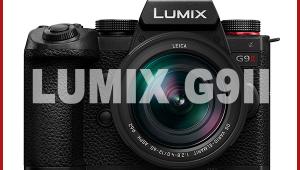In tests we made that included a tiled roof using the 55mm setting of the kit lens the structure. - Ellerslie Mission Society
Fujifilm X-M1 Mirrorless Camera Review
The Fujifilm X-M1 is an extremely compact system camera that uses Fujifilm’s 16MP X-Trans CMOS sensor. The camera offers very high image quality due to its special RGB filter array which differs from the standard Bayer RGB pattern. The pattern on the APS-C-sized X-Trans sensor resembles the random pattern of grain of analog film and reduces image noise. The interpretation of this RGB pattern isn’t very easy, but the most current versions of Adobe’s Photoshop Camera Raw plug-in and Adobe’s Lightroom are able to convert this pattern correctly.





The Fujifilm X-M1 is very lightweight, even for a compact system camera. Combined with the new FUJINON XC16-50mm F3.5-5.6 OIS lens it weighs in at a mere 1.15 lbs (body only, including card and battery, about 3/4 lb); note that we tested with the FUJINON XF18-55mm F2.8-4 R LM OIS lens, which shows a better performance in sharpness and resolution tests.
The camera offers a 3” LCD that can be flipped up- and downward (90 degrees upward, 90 degrees downward) and has 920,000 RGB dots, showing a brilliant and sharp image. The monitor has a special “sunlight mode” that uses extremely intense backlighting and creates excellent viewing in bright light conditions. Nevertheless, Fujifilm fans may miss a real (optical or electronic) viewfinder like the famous Hybrid viewfinder of the X-Pro1 or the very good OLED viewfinder of the X-E1.
The camera has all the standard exposure programs like P, S, A, and M. In addition, it offers scene modes, the “Advanced Filter” mode with effects like “Toy Camera” or “High Key,” and an “Advanced SR” mode, which detects the scene conditions automatically. A large mode dial on the top makes it convenient to choose these image modes.
The camera has two additional dials to change image parameters. The first one is located on the top and can be reached with the thumb of the right hand; the second dial is located on the back and is also operated by the thumb. Theoretically, you can use the forefinger to change parameters with the first wheel and the thumb for the second wheel (for a simultaneous changing of aperture size and shutter speed setting in M mode, for example) but this causes a somewhat strange positioning of the right hand and isn’t really that comfortable.
The AF system of the X-M1 is fast, but cameras like the recently tested Panasonic GF6, for example, are a little faster. In some situations (especially in low-light situations) the automatic focusing is a little “uncertain,” which can be annoying. Manual focusing is easy because the camera offers a focus loupe and focus peaking.
The X-M1 offers numerous individual settings for user customization, such as nice touches like the ability to choose the rotating direction of the focusing ring.
The camera is able to record Full HD video in 30p mode and records MOV files. In some situations it causes very intense aliasing effects in the scenes (see video test portion of this report).

Comments On Still Image Quality
Color: The color reproduction of the X-M1 is very good. The automatic white balance system causes a shift into the yellow and green directionin the standard test box shot, although it is quite good in the portrait shot. The overall saturation is on a slightly high level for a compact system camera (nearly 110 percent) but color errors are on a very low level. Skin tones are reproduced nearly perfectly and look very soft and smooth with nearly perfect gradients.

Sharpness: The sharpness results are excellent. The camera reproduced the test chart with 3059 lines in picture height, which isn’t far from the nominal sensor resolution (3264 lines per picture height). The standard test box shot and the portrait shot show images that are rich with details and fine structure.
Noise: The camera showed an excellent performance in our noise tests. The luminance noise factor stays below 1.0 percent up to ISO 3200 and crosses this critical value only in images taken at ISO 6400. Color noise is extremely low as well. We noticed some noise artifacts in homogeneously colored areas only in ISO 6400 images, like the grayscale pattern of the Stouffer 4100 test chart. Color noise filtering is on a low level so even images taken with the highest ISO speed settings are clean with rich details.
The dynamic range results are on an average level. The camera gained a maximum of 10.5 f/stops, which isn’t impressive, but keeps this level even when shooting with higher ISO speed settings, which is very good.

Comments On Video Functions
The Fujifilm X-M1 is able to record Full HD video (1920x1080 pixels) in 30p mode. Movies are saved as QuickTime MOV files which contain MP4 data. The camera doesn’t allow use of manual settings in video mode. If you are using exposure programs like S or A with user-defined ISO speed settings, the camera will switch back into AUTO mode when you press the video recording button on the back.
In video mode the camera works with continuous AF settings and can follow predefined focus areas (focus tracking). But the continuous focusing in video mode is extremely slow; you can’t compare it with current camcorders or system cameras, which are more fully dedicated to video recording.
The automatic exposure settings, however, are automatically changed while recording movies to match current light conditions. But changes in aperture size can cause “stuttering” that is clearly visible in the scenes. Manual focusing is available in video recording mode. The camera helps with a focus peaking function that is also very helpful for manual focusing in standard photo mode.

Comments On Video Quality
The video quality is acceptable, but the camera also showed some very disappointing results. Even though the data rate of the MP4-MOV files is very high (variable bit rate with 37 MB/s!), the quality and especially the resolution is very low. The contrast between the X-M1 video results compared to the excellent still image results couldn’t be starker. The ISO chart was reproduced with 428 lines (1080 lines nominal video resolution), which is a very low result.
The camera tends to produce very intense moiré and aliasing effects. In tests we made that included a tiled roof using the 55mm setting of the kit lens the structure of the roof shingles clashes with the image sensor structure and causes a very strange black-and-white pattern.
The color performance is good, but worse than our test results in standard still images. The white balance shows a shift into the yellow and green direction. A lot of colors show major differences to their given values (see yellow, red, and blue nuances in the result chart).
Scorecard
Pro
+ Excellent image quality, high resolution
+ Very compact and extremely light camera
+ Swivel LCD
+ Wi-Fi module
Con
- Missing optical or electronic viewfinder
- Video function lacks manual control
- Wi-Fi module doesn’t support remote control function with smartphones/tablet computers and isn’t NFC compatible
Image Tech is where we publish web-exclusive lab reports on cameras. To read the reports please go to the Shutterbug homepage at www.shutterbug.com and click on the Image Tech tab on the top navigation bar. New reports are published frequently, so check Image Tech for updates.
The Fujifilm X-M1 (body only) has a list price of $699.95; $799.95 with the FUJINON XC16-50mm F3.5-5.6 OIS kit lens. For more information, visit www.fujifilmusa.com.
Lab results and test images by BetterNet, our TIPA-affiliated testing lab. Edited by George Schaub.
- Log in or register to post comments


I wish I used it once. only just seen it, I felt like.
http://www.friv3gaming.com | http://www.friv10game.org

















































